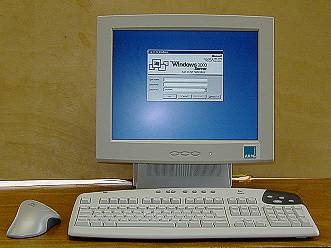


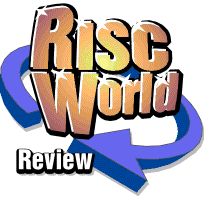
SLYM: A Radical New Approach to Education
Another new computer? Andy Harmsworth looks deeper...
It is a fact that many schools still have, and still use, a large number of very old Acorn computers - A3000s and so on. It is a tribute to Acorn's engineering team that these machines still function. Whilst 10-year-old machines won't last forever - even if they look like they will - there is little joy today for kids and teachers sitting down in front of a clunky-looking old machine. Where's the inspiration to work? Where's the fun factor?
In a previous article, I explained how useful schools - including my own - are finding the Citrix ICA (Independent Computing Architecture) client-based system which allows Windows sessions to be run on effectively any platform - including RISC OS. To quote from that article, in case you didn't read it:
-
"At the BETT show, Castle's Jack Lillingston told me that they were working on an educational solution that would take the entire market by storm. Assuming this arrives sooner rather than later, retaining old Acorn kit could be the best move a school has made in the ICT field for years."
Announcing...
Since then, Castle and Cumana have announced SLYM (pronounced "slim" - some people on newsgroups have indicated that this could be read as SLIME!), an entirely new NC solution based around an LCD flat screen terminal, with the computer concealed in the base.
Despite tight deadlines for this article, and our end of term only a day away, I was fortunate enough to have Cumana's Nigel Taylor pay a visit to my school with a prototype Slym. What a surprise this machine is! Firstly it looks 21st century, there's no denying that. More to the point, it is 21st century - this machine is bang up to date.
Modern for a Reason...
The machine was set up in a side-room to our IT centre, containing A7000s acting as dedicated NCs running TopCat. Their standard Acorn AKF60 monitors (14") really did look dreadful by comparison - the displays flickering perceptibly. Meanwhile, the Slym sat there looking completely flat. It is. The display is bright and could not be seen to flicker. It really is about time we got rid of this 100 year old CRT (cathode ray tube) display technology. The man who opened our Physics Department, who invented the principle of the CRT (JJ Thomson), would have been impressed by the Slym display. Why Slym? The photo below shows quite clearly the inspiration for the name:
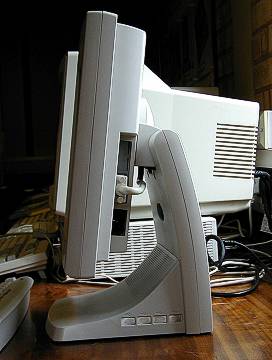
Fig. 2: The slim Slym. An A7000 with standard 14" AKF60 behind.
Aside from its looks, impressive was the way that Slym plugged straight into our network, dynamically gaining a network address from our server. I was able to log on immediately - brilliant! This is plug and play at its best... except the only plugs that were needed were a power lead, and a network lead. Yes - even the keyboard and mouse work by radio waves! This will be supplied as standard.
Our IT gang raised concerns about the wireless keyboard and mouse. In a school like ours, with open access to computer rooms, it would be very tempting for pupils to wander off with them. Fortunately, it will be possible to specify a more traditional keyboard and mouse. Nigel made it clear, however, that they are coded in some way to only function with an individual Slym.
On the subject of theft, to quote - or perhaps mis-quote - our Head of IT:
"Very sweet, but they would nick the bloody monitors!"This was before he had seen the machine. It impressed everyone who saw it, but will it be suitable for use in schools?
We indicated our anxiety that monitor screens tend to get poked rather a lot by kids (and perhaps more by staff!) and would the screen stand up to this kind of punishment? It was suggested that perhaps a stronger polycarbonate or glass cover should go on the front, in the same vein as Apple's excellent - but defunct - eMate. This is now being looked at.
Technical Improvements...
Slym relies, in whatever mode it runs in, on TopCat - essentially a RISC OS ICA client. Earlier this year, Microlynx released a version that supported sound, seen by some as essential for education. Whatever your feelings as an educator, if the RISC OS client did not support sound, then what advantage of the kit? Especially if you're not interested in the RISC OS side of things - perish the thought! So TopCat is under continuous development, and Nigel revealed that it is expected that Slym will launch with a version of TopCat supporting the following new features:
- 256 colour limit removed. Minimum 32K, possibly even 65M.
- 800×600 resolution limit removed. Minimum 1024×768 to be supported.
Both of these are seen as essential by heavy graphics users of network computers. Certainly, before the day, a number of people on ROUGOL's RISC OS Education Discussion List had raised the concern that PC-based network computers did offer these higher resolutions. It would seem, therefore, that Slym is now able to compete.
Further improvements to the Slym when compared to the basic RISC OS NC, is the processor. Due to current restrictions of RISC OS, it is not possible to use an integrated chip more powerful than the ARM75000FE. It would seem that a faster version is available, and Slym will ship with a 64 MHz CPU. It is to Castle's credit that this machine is having as much new technology as possible put into it as standard.
Another useful feature that sets it apart from standard RISC OS NCs is ports. Slym has both serial and USB built in, although the latter requires RISC OS drivers - which are being worked on. Even the presence of a humble serial port makes the machine all the more appealing. Datalogging on the Slym could be a reality. Maybe even the USB ports could be made to work with an Intel Microscope, all the rage in Biology departments up and down the country.
The ability to cut and paste from RISC OS to Windows is a useful feature of the Acorn PC card. Whilst it is not possible at the moment to directly cut and paste via the global clipboard, it is of course possible to save from either environment to your network directory, whereupon you can pick the file up.
Other Markets?
It was recently announced that American researchers found a rare hospital fungus Aspergillus fumigatus in their intensive care wards, following the installation of computers. Apparently the fans trap fungi in the machines, which then go crazy in the warm conditions, with infective spores being blown back into the ward.
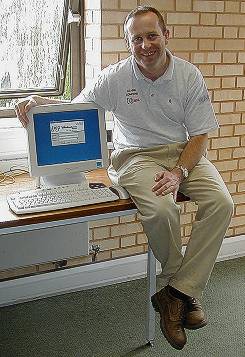
Fig. 4: Cumana's Nigel Taylor looking pleased with their baby.
No surprise, then, that Nigel has been looking at introducing Slyms into NHS hospitals in the UK, especially as they already use Citrix extensively. Recently, Nigel was taken on a tour of the NHS headquarters' server room. They have 42 servers in all, and Slym was shown operating just as quickly as their current machines. Its tremendous size advantage, lack of fungus-spewing fans, and low operating cost make it a desirable alternative. Castle will have to tailor Slym to meet their needs, but there is no reason why they can't do this. Cumana are now seeking an approved listing, the last non-technical hurdle before this new market can be grasped.
In the same way that RiscStation are pushing RISC OS use into new markets with their antipodean POSsum, it would seem that a product initially targeting education will have major sales potential elsewhere. This is great news for the market as a whole, and will serve to keep the price down for schools - essential in today's competitive market.
Global Impact?
It is trendy in the RISC OS world to talk about the low power requirements of our computers compared to the alternatives. This is indeed true, and buying a RiscPC compared to a PC does have a lesser impact on the environment - through less energy use comes less pollution; through longer life, less wastage. The impact is nevertheless not particularly significant. Until now.
NCs use little power because they have no moving parts - except the odd electron or two. A standard monitor, however, adds a significant burden to the energy requirements. Bring together the modern colour LCD screen, and couple it directly with the NC hardware, and you're sorted!
When I first heard about Slym, I asked Castle about its power requirements. Apparently, the monitor itself consumes about 20 W of power (1 W = 1 watt, or 1 joule of energy per second). The motherboard consumes a further 4 W. When compared to a classroom of 20 RiscPC 600s, with AKF60s, this amounts to an incredible saving of 1.2 kW (1200 W) - or, about the same as an average kettle! The difference being, of course, that you don't leave the kettle on for 12 hours a day.
Furthermore, this amounts to over 5000 kWh of electrical energy saved per year - costing around £400. (1 kWh is a kilowatt-hour, or a "unit". It's the same as 3,600,000 joules). Yorkshire Electricity's website would seem to indicate that this would be a reduction of about 2,400 kg of carbon dioxide per annum. This does not sound like much, but 2.4 tonnes ... is 1.2 million litres ... or about 1,200 cubic metres. Imagine the beneficial environmental impact that installing these devices into our schools could have.
Summary
In many respects, Slym is as innovative as the RiscPC was back in 1994. Back then, the PC card enabled users to gain access to Windows applications on a computer that still allowed them to run RISC OS - with all its inherent advantages. Today, Slym allows the networked generation to run RISC OS programs on a machine that will also happily operate as if it were a desktop PC.
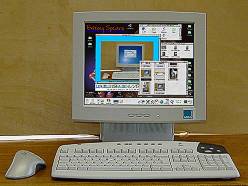
Fig. 5: How I wish my home machine looked!
Looking ahead, it is possible that widespread broadband access to the net in only a couple of years might see Slym for sale as a home computer, and not just primarily to the education market. All that it would need is a built-in modem, something which Nigel would like to see in the future. Much like the RISC OS-powered Internet TVs and STBs spawned from PACE (BUSH iTVs), Slym could well become the next million seller.
In the words of a fictitious character, embodied by Bristolian, Dave Prowse:
"Impressive. Most impressive".
Links
| APH: | www.harmsy.freeuk.com |
| BBC News Article | news.bbc.co.uk/hi/english/health/newsid_1351000/1351450.stm |
| Castle: | www.castle.org.uk |
| Cumana: | www.cumana.net |
| Education List: | educate.jellybaby.net |
| Microlynx: | www.microlynx.co.uk |
| Yorkshire Electricity: | www.yeg.co.uk/business/green_electricity/welcome.shtml |
E&OE A P Harmsworth - opinions in this article are entirely my own, and not necessarily those of my employer
A P Harmsworth
